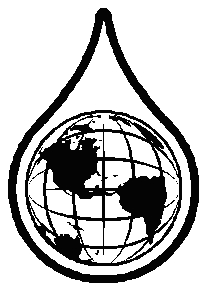|
 WATER
FOR PEOPLE AND THE PLANET WATER
FOR PEOPLE AND THE PLANET
By Kristin L. Gunckel and Rebecca Forthoffer
With support from David Vandenbelt, Dean Grosshandler, Christopher
Wilson, James Gallagher, Felicia Moore, and David Fortus
Michigan State University
2005
Water for People and the Planet is a high school curriculum
unit developed to help students understand where our water comes
from and where it goes. This inquiry unit focuses on the connections
between groundwater and watershed systems. Lessons are designed
for students in general-level science courses who typically have
limited interest in learning science. Lessons are intended to
help students connect big ideas in science to their own lives
and see the relevance and importance of learning science. Included
within the unit are connections to personal water use; a recent
Mid-Michigan urban flooding event; an exploration of a groundwater
pollution case in Battle Creek, Michigan, which contaminated the
municipal groundwater supply; and investigations of water supplies
and water treatment facilities.
This unit follows a general inquiry and application model.
Lessons use a general approach that 1) establishes a problem/purpose,
2) develops a model and provides experiences using the model,
3) provides data for finding patterns, 4) allows students to develop
explanations, 5) and applies learning to new situations. Student
materials support student small group cooperation, conversations,
and co-construction of understanding.
Teacher materials provide embedded assessment scaffolds to
help teachers assess how well students are progressing towards
the learning goals and suggestions for what to do next in helping
students revise their initial ideas about important concepts.
A pre-post test and a culminating authentic assessment activity
are also included.
Lessons
Introduction –
Overview of the unit and learning goals
Lesson
1 – Water as a Finite Resource
This lesson introduces the unit and establishes the purpose for
studying about water resources. Students learn about how much
fresh water is available on Earth, calculate their own water use,
and compare their water use to people’s water use in different
cultures.
Lesson
2 – The Engineered System
This lesson provides the context for all future lessons. It establishes
the big picture of the surface water system, the groundwater system,
and their connections to where we get our water and where it goes.
Students use specially-designed cards to lay out the parts of
the engineered water system from the natural source to their house,
and back to the natural system.
Lesson
3 – Groundwater
This lessons looks specifically at the groundwater system. Students
build groundwater models and draw cross-sections of a groundwater
system using well-log data.
Lesson
4 – Watersheds
This lesson looks specifically at the surface water system (watersheds)
and introduces pollution in watersheds. Students model and map
watersheds on an island, determine watershed boundaries on a map
of Michigan, and use their understanding of watersheds in a role
play activity to solve the a surface water pollution problem in
the Flood at Cottonwood Flats.
Lesson
5 – Groundwater Pollution
This lesson returns to the groundwater system. Students examine
pollution in groundwater systems and the connection between groundwater
and surface water systems. Students contaminate and attempt to
clean-up the groundwater models they build in lesson 4, then use
maps and cross-sections to solve the problem of groundwater pollution
at the Verona Wells, Battle Creek, Michigan.
Lesson
6 – Water Treatment
This lesson looks at what we do with our water and how we clean
it up. Students model the process of water treatment at a waste
water treatment plant.
Lesson
7 – Renewable and Re-Useable
This lessons examines water as a finite but renewable and a re-useable
resource. Students role play water pollution and clean-up scenarios.
End
of Unit Assessment - The Salt Problem
This problem synthesizes surface water, groundwater, pollution,
and the engineered system. Students use map and cross-section
data to locate the source of salt pollution in an aquifer and
develop potential solutions.
Pre-Post
Test
Short answer pre-post test that teachers can use to assess student
learning. Questions match the identified learning goals and correlate
to the lessons in the unit.
This material is based on work supported
by the National Science Foundation under Grant No. ESI-0227557.
Any opinions, findings and conclusions or recommendations expressed
in this material are those of the author(s) and do not necessarily
reflect the views of the National Science Foundation.
|

